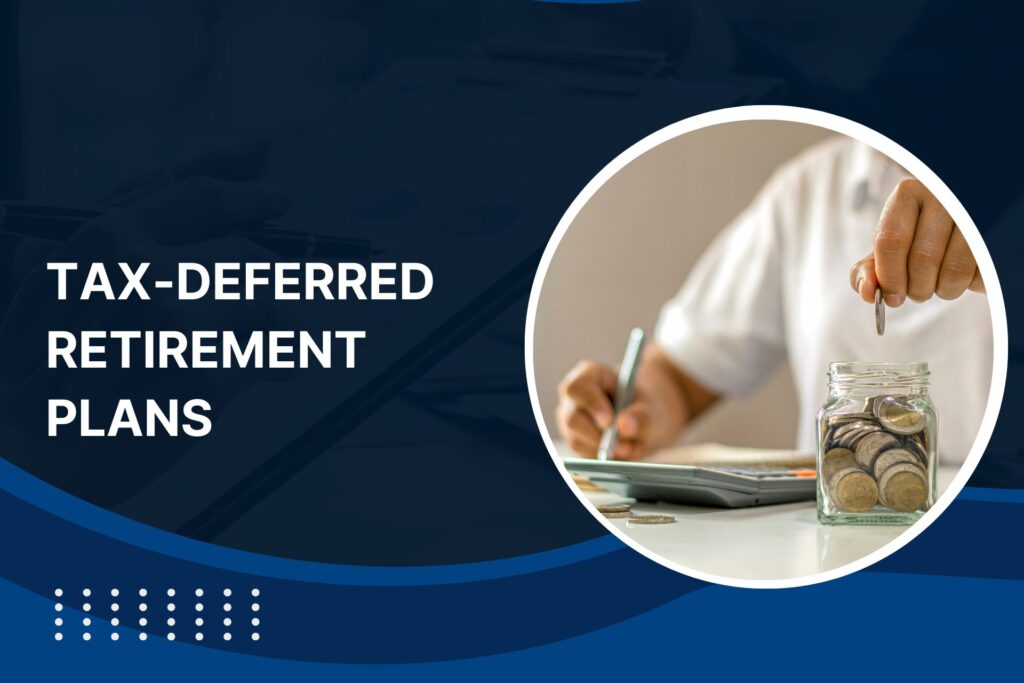In the quest for financial freedom and a secure retirement, understanding the nuances of tax-deferred retirement plans is crucial. These plans play a pivotal role in building a robust financial foundation, providing individuals with the means to grow their wealth while minimizing tax implications. In this comprehensive guide, we will delve into the intricacies of tax-deferred retirement plans, exploring their benefits, types, and key considerations.
I. The Basics of Tax-Deferred Retirement Plans:
- Tax-deferred retirement plans are investment vehicles designed to help individuals accumulate funds for retirement while enjoying certain tax advantages. The primary purpose is to defer taxes on contributions and investment gains until withdrawal during retirement.
- Contributions: Individuals contribute a portion of their pre-tax income to these plans, reducing their taxable income for the year.
- Growth: The contributed funds grow tax-free within the plan, allowing for compounded growth over time.
- Withdrawals: Taxes are deferred until retirement when individuals begin withdrawing funds. Withdrawals are typically taxed at the individual’s income tax rate during retirement, which may be lower than during their working years.
II. Types of Tax-Deferred Retirement Plans:
A. 401(k) Plans:
- Employer-Sponsored: Offered by many employers, 401(k) plans allow employees to contribute a portion of their salary, often with employer matching contributions.
- Contribution Limits: There are annual limits on contributions, but these limits are generally higher than those for Individual Retirement Accounts (IRAs).
B. Individual Retirement Accounts (IRAs):
- Traditional IRAs: Individuals contribute pre-tax income, and earnings grow tax-deferred until withdrawal.
- Roth IRAs: Contributions are made with after-tax income, but withdrawals, including earnings, are tax-free during retirement.
C. Simplified Employee Pension (SEP) IRAs:
- Geared Towards Self-Employed: SEP IRAs are designed for self-employed individuals and small business owners.
- Contributions: Employers make contributions on behalf of employees, and these contributions are tax-deductible.
D. Deferred Annuities:
- Insurance-Based: Annuities are insurance products that provide a stream of income during retirement.
- Tax-Deferred Growth: Earnings within deferred annuities grow tax-deferred until withdrawal.
III. Benefits of Tax-Deferred Retirement Plans:
A. Compound Growth:
- Accelerated Growth: Tax-deferred compounding allows for accelerated growth over the long term.
- Maximizing Returns: The ability to reinvest gains without incurring immediate taxes enhances overall returns.
B. Lower Current Tax Liability:
- Reduced Taxable Income: Contributions to tax-deferred plans lower taxable income during the contribution year.
- Strategic Tax Planning: Individuals can strategically manage withdrawals during retirement to minimize tax liability.
C. Employer Contributions:
- Matching Contributions: Many employer-sponsored plans offer matching contributions, effectively doubling the impact of individual contributions.
- Enhanced Retirement Savings: Employer contributions significantly boost overall retirement savings.
IV. Key Considerations:
A. Contribution Limits:
- Annual Maximums: Understanding and adhering to annual contribution limits is crucial to optimizing the benefits of tax-deferred plans.
- Catch-Up Contributions: Individuals aged 50 and older may be eligible for additional catch-up contributions.
B. Withdrawal Penalties:
- Early Withdrawal Penalties: Withdrawing funds before the age of 59½ may result in penalties and taxes.
- Required Minimum Distributions (RMDs): RMDs must begin by age 72 for traditional IRAs and 401(k) plans.
C. Investment Options:
- Diverse Investment Choices: Most tax-deferred plans offer a range of investmen options, allowing individuals to tailor their portfolio to their risk tolerance and retirement goals.
- Regular Review: Periodic review of investment choices ensures alignment with long-term objectives.
Conclusion
Tax-deferred retirement plans serve as invaluable tools in achieving financial freedom and a secure retirement. By harnessing the power of compound growth and strategic tax planning, individuals can pave the way for a comfortable and stress-free retirement. Whether through employer-sponsored 401(k) plans, traditional IRAs, or other tax-advantaged options, the key lies in understanding the intricacies of these plans and making informed decisions to secure a prosperous financial future.


